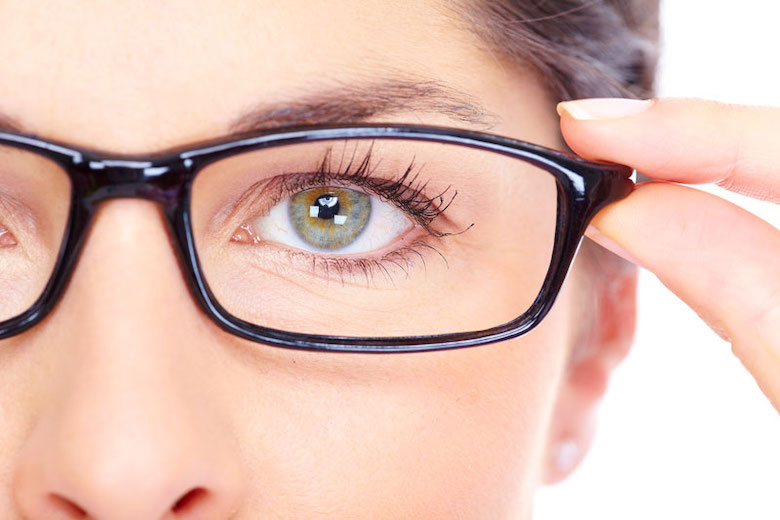Pediatric Vision Health – Some Behaviors to Look Out For
Many vision issues can be difficult to detect and frequently are undiagnosed by a pediatrician’s routine vision screenings or during everyday school interactions.
Unfortunately, many children with undetected vision problems struggle at school and can be misdiagnosed with ADHD or reading issues. Often times all they really need is vision correction to give them clear, comfortable vision.
Dr Rachael Sweeney from Vision Source Insight Eyecare outlines some signs to watch out for that may indicate your child has a vision problem:
Headaches & Tired Eyes:
Possible Signs of Hyperopia (Farsightedness) – Means your child sees clearly at a distance, but not so well close up. This problem becomes clear when starting to read because the eyes are required to focus for longer periods of time. Kids can often compensate long enough in class, but not when reading a book.
Occurrence: According to the National Institutes of Health, 21% of preschool-age children have hyperopia making it quite a common condition. It’s a refractive error caused by slight irregularities in eye shape or power. Uncorrected refractive errors are the most common kinds of vision problems in children. But here’s the good news: It’s correctible with glasses.
Dr. Rachael’s Recommendation: Unlike some other eye disorders, hyperopia will likely go away on it’s own as your child gets older. It can in extreme cases lead to worsening vision problems, such as misalignment of the eyes (called strabismus) and decreased vision in one or both eyes that can’t be corrected with glasses (amblyopia).
Squinting:
Possible Signs of Nearsightedness, or myopia – often shows up as blurred vision. You might notice your child squinting or blinking a lot, as if to try to wipe the blurriness away.
Occurrence: According to the National Institutes of Health, 4% of preschoolers have myopia. It is among a group of vision problems called refractive errors, which are the most common cause of vision problems for kids. Refractive errors change how light hits the retina, which is the part of the eye that converts light into signals sent to the brain. Myopia can be fixed with glasses, but if uncorrected can lead to lifelong vision problems.
Dr. Rachael’s Recommendation: Nearsightedness makes it difficult for kids to see around the classroom and the Smart Board or chalkboard at the front of the room. Glasses do help, but you can also ask to have your child seated near the front of the room.
Head Tilting:
Possible Signs of Strabismus (Crossed eyes) – are a vision problem in which the eyes don’t line up. The eyes might look in different directions or focus on different things. It happens when muscles surrounding the eye aren’t equally strong. It can come and go.
Occurrence: According to the National Institutes of Health, about 2% of children experience crossed eyes. Children whose mothers smoked while they were pregnant have twice the risk of developing strabismus. What causes it in babies isn’t known, but it tends to run in families. A child can be at risk for strabismus if he has a lazy eye or is farsighted. It’s very common to see your baby’s eyes cross, but if the crossing persists past the third month, the child should see a doctor.
Dr. Rachael’s Recommendation: Left untreated, strabismus can worsen. When the brain gets a different signal from each eye, it eventually ignores the one coming from the weaker eye. That eye, then, continues to lose vision, which can lead to lazy eye, or amblyopia. You may only see the symptoms when your child is tired.
Poor Grades:
Possible Signs of Amblyopia (Lazy eye) – Lazy eye, officially called amblyopia, means a child’s vision didn’t develop properly, usually in just one eye. Lazy eye can compromise a child’s depth perception and eye-hand coordination.
Occurrence: According to the National Institutes of Health, about 5% of children have amblyopia. It can sometimes be treated by patching the child’s “good” eye, forcing the affected one to work harder and improve, combined with other eye exercises. Most children also will need glasses to help them focus. A family history of amblyopia is a risk factor.
Dr. Rachael’s Recommendation: It can go undetected for years while parents just assume their child isn’t a great student or a gifted athlete. If left untreated, the child’s vision might never develop correctly in the affected eye.
Reading with a Finger:
Possible Signs of Double Vision – It sounds pretty self-explanatory, but double vision is a little bit more complicated than you might think. The most common cause of double vision is binocular diplopia, which is when the eyes look in two directions, therefore sending two different images to the brain. Conflicting images in the brain = double vision.
Occurrence: Since kids can’t always describe what they are seeing, diagnosing double vision can be difficult – and hard to quantify overall. Parents should watch for squinting, covering one eye with their hand, looking at objects from the side instead of straight on, as well as any unusual head movements.
Dr. Rachael’s Recommendation: When a child sees 2 images, the brain will eventually disregard one of those. And when vision in one eye is gone, the person loses depth perception. An eye doctor would want to check things like how your child’s eyes track across a sheet of paper, how the eyes are used at the same time, and how a child transforms images from a vertical to a horizontal plane. In rare cases, double vision can be a sign of a life-threatening condition, like an aneurysm or brain swelling.
Physical Signs:
In addition to behavioral signs it is important for parents to recognize physical signs in their children:
- Itching, burning, or heavy discharge in the eyes
- White areas in the pupil of the eye
- Changes in the color of the iris
- Both eyes look different
- Swollen, red eyes
- Frequent headaches
- Lazy eye
Vision Source Insight Eyecare Consultation:
Vision Source Insight Eyecare provides eye exams for young patients and a broad selection of prescription eyewear and prescription sunglasses in Sandy Springs, Dunwoody, Buckhead and Atlanta. Dr Sweeney will gladly provide recommendations. Book an appointment today.

